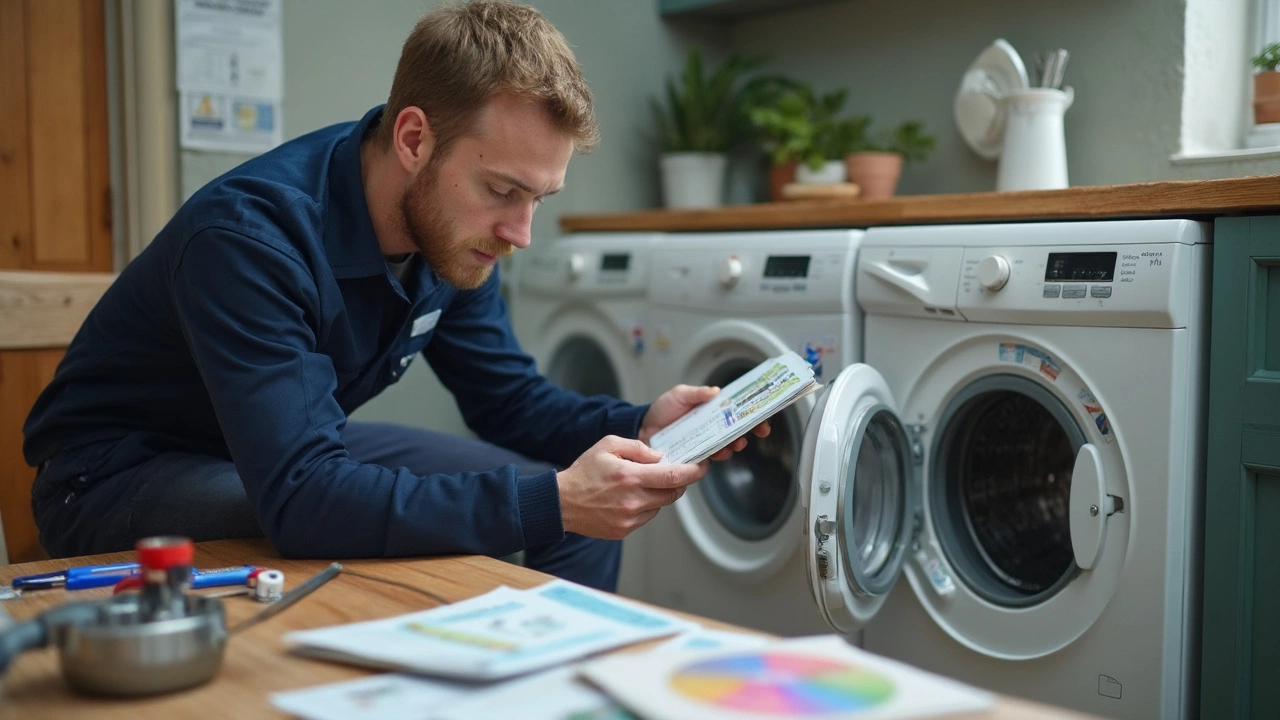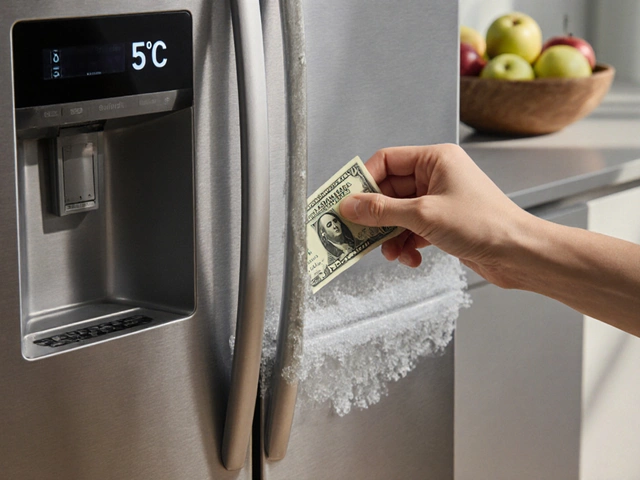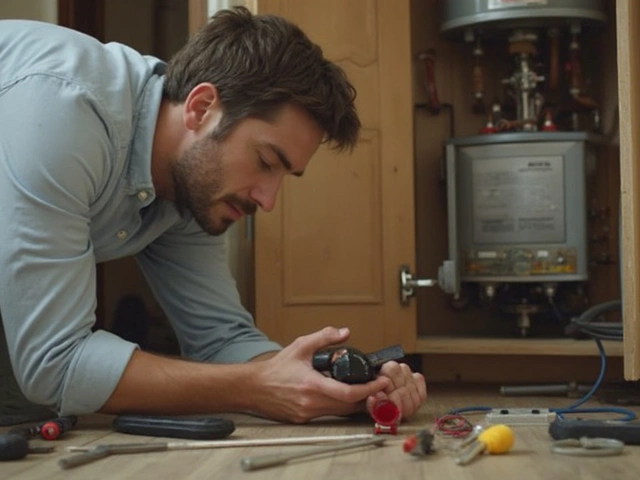Ever wonder why some appliances zap less energy but do the same job? That’s where appliance standards come in. These are rules set by governments or industry groups to make sure your fridge, washer, or furnace isn’t just wasting electricity or gas. The main goal? Save you money, keep your home safe, and cut down on stuff that ends up in a landfill.
If you’re thinking, “Do these standards even affect me?” — the answer’s a big yes. Appliances that meet the standard can work better for years, while the others can cost you extra on the power bill or burn out early. You end up paying more for repairs or a replacement. So, the next time you spot an energy label or a sticker showing certain numbers and dates, that’s not just decoration—it’s a shortcut to knowing if the machine meets today’s rules.
- What Is an Appliance Standard?
- Why Standards Matter for Your Appliances
- How to Tell If an Appliance Meets the Standard
- Common Standards You Might See
- Tips for Choosing Compliant Appliances
What Is an Appliance Standard?
If you’ve ever seen that yellow EnergyGuide label on a dishwasher or the blue ENERGY STAR sticker on a fridge, you’ve already bumped into appliance standards. In simple terms, an appliance standard sets the minimum requirements for how a home device should work—especially when it comes to how much energy or water it uses, as well as how safe it is in your house.
Most countries have their own rules, but in the U.S., appliance standards mostly come from the Department of Energy (DOE) and the Environmental Protection Agency (EPA). They decide things like how much electricity your air conditioner should use every year or what safety switches a clothes dryer needs to have.
These standards aren’t just random. They’re based on real-world testing and tons of data. For example, before making changes to the rules for dishwashers, the DOE will look at what’s out there—how much water and power the machines use, which features really impact performance, and what’s possible with today’s tech. Then they set a target that all new products must hit if they want to be sold or installed where the standard applies.
Here’s what a typical appliance standard covers:
- Maximum energy use per year (like kWh/year for a fridge)
- Water use per cycle (for things like dishwashers and washing machines)
- Required safety features (overheating protection, tip-over switches, etc.)
- Instructions for repairs or parts (so techs know what to do)
Curious how these numbers actually affect you? Check out this sample data table for refrigerators set by the DOE:
| Year | Max kWh/Year (Typical Fridge) |
|---|---|
| 1990 | 1,200 |
| 2001 | 530 |
| 2025 | 350 |
So, if you’re still hanging on to that 1990s beast, it might use three times the power of a new model. Standards push makers to build better, more efficient appliances over time—helping both your wallet and the planet.
Why Standards Matter for Your Appliances
It might sound like just more government paperwork, but appliance standards actually make a real difference in your daily life. They keep your home safer, your bills lower, and your appliances running longer. Let’s get into why this stuff matters.
First, safety gets a big boost. Standards mean manufacturers can’t use cheap wiring or shortcuts that could lead to shocks or fires. When you see a trusted sticker, like the UL mark, you know your appliance passed basic safety checks before it hit the shelves.
Next up is energy efficiency. Appliances that meet certain home appliances standards use less water, gas, or electricity. The U.S. Department of Energy pegs annual savings for a typical household at about $450 just by picking efficient models. That means less energy wasted and more cash in your pocket month after month.
| Appliance | Old Model Annual Energy Use (kWh) | Standard Model (kWh) |
|---|---|---|
| Refrigerator | 1300 | 500 |
| Dishwasher | 400 | 270 |
| Washing Machine | 900 | 250 |
Standards also cut down on pollution. Less energy used by appliance standard means less fossil fuel burned at power plants, which shrinks your household’s carbon footprint. This helps air quality and the environment without you having to do anything extra.
Even on the repair side, standards help. Appliances built to the right specs tend to have fewer breakdowns. Techs can usually get parts easier too, since the specs are the same everywhere. That means faster repairs and maybe even lower costs because there’s nothing too custom or weird about the machine.
When you add it all up, these standards aren’t just a behind-the-scenes thing. They’re built into every choice you make, right down to your monthly expenses and how much hassle you deal with in maintenance. When you buy or repair, check that your appliance service knows the latest standards. It’s your best bet for getting the most out of your gear.

How to Tell If an Appliance Meets the Standard
It's not hard to figure out if your fridge, dryer, or dishwasher lines up with the latest appliance standard. Most of the time, you just need to know where to look. Every reliable appliance comes with clear signs that it meets the required guidelines.
Here’s what you want to check:
- Look for the Label: If you see an ENERGY STAR sticker, you can breathe easy. Appliances with the ENERGY STAR label have to meet strict energy efficiency rules set by the government.
- Check the Fine Print: Flip the appliance, pop open the door, or check the back — there’s usually a data plate or sticker. It’ll have a certification mark like UL (Underwriters Laboratories) or CSA (Canadian Standards Association), which means it’s safe and meets major appliance regulations.
- Read the Manual: Boring, I know. But the manual spells out compliance info, often listing every standard or certification the appliance follows. There’s usually a section for safety and efficiency details.
- Give the Product Website a Peek: Manufacturers often post downloadable certificates or statements about which appliance standard their products hit. There’s often a “Specs & Certifications” tab on the product page.
Sometimes, the label even lets you know how much energy the device will use each year. Here are typical elements of the yellow EnergyGuide label you might see in the US:
| Section | What It Means |
|---|---|
| Estimated Yearly Energy Use (kWh) | The average amount of energy the appliance will use in a year |
| Estimated Yearly Operating Cost | How much you'll pay (on average) to run the appliance for a year |
| Compare Models | Shows what’s typical for similar products, so you can spot an energy hog at a glance |
If you’re shopping in Europe, check for the EU energy efficiency label—same deal, just a different look and rating system (from A to G). In Australia, it’s the red and yellow star label. Whatever the style, if your appliance is missing a required energy or safety label, that’s a red flag. You could be looking at old stock or a product that doesn’t meet current appliance standard rules, so it’s best to keep looking.
Common Standards You Might See
When you walk into a store or shop online for home appliances, you’ll spot all kinds of stickers and labels. These aren’t just there for show. They actually tell you how well a device meets certain appliance standard rules. Here are some of the most common ones you’ll notice:
- ENERGY STAR® – This blue label is probably the most popular for energy efficiency. If a product is ENERGY STAR certified, it uses at least 10–50% less energy than similar models. That’s a solid way to save cash each month.
- UL Listed – If you see a UL mark, you know it’s been tested by Underwriters Laboratories for electrical safety. You want this on anything that plugs in, especially stuff in the kitchen or laundry room.
- CE Marking – This is mostly for products sold in Europe, but you’ll see it on imports, too. It means the appliance meets European safety, health, and environmental rules.
- DOE Standards – The U.S. Department of Energy sets minimum energy efficiency for big-ticket appliances like fridges, dishwashers, and air conditioners. Most appliances have to meet these standards to be sold in the U.S.
- CSA or ETL – These marks are like UL, acting as stamps for electrical safety, though you’ll see ETL on a lot of newer brands.
Wondering how much money these appliance standards actually help you save? Check out this quick table:
| Appliance Type | Standard | Avg. Annual Savings* |
|---|---|---|
| Refrigerator | ENERGY STAR | $35–$60 |
| Clothes Washer | DOE/ENERGY STAR | $35 |
| Room Air Conditioner | DOE/ENERGY STAR | $25–$40 |
*Savings can vary based on your local utility costs and how you use the appliance.
The bottom line? When you see these labels, you’re looking at appliance standards in action. Picking stuff with these marks makes your life easier and your home cheaper to run. If you don’t spot a label, check the user manual or the company’s website. Bad or missing marks could mean you’re dealing with outdated or less reliable equipment.

Tips for Choosing Compliant Appliances
Not every appliance out there follows the same rules. If you want to save on bills and skip headaches down the line, picking compliant appliances is a smart move. Here’s what you should keep an eye out for:
- Check for Energy Labels: Look for labels like ENERGY STAR or your country’s official energy rating. In the U.S., an ENERGY STAR sticker means the appliance uses up to 30% less energy than models that just meet the minimum appliance standard.
- Read Product Specs: Don’t just trust the brand logo. Flip the box or check online listings for words like "meets 2024 DOE requirements" (or whatever authority handles appliance regulations in your region).
- Look at the User Manual or Warranty: Reputable manufacturers will brag if their devices pass strict appliance regulations. If you don’t see any mention of this, that’s a red flag.
- Double-Check Serial Numbers: With some products—like air conditioners or refrigerators—you can enter the serial number on the manufacturer’s website to see if it matches the most recent appliance standard.
- Read Up on Recalls: If an appliance got recalled for missing safety or efficiency standards, you can usually find this info online before you buy. The U.S. Consumer Product Safety Commission keeps a live list for reference.
- Ask Service Pros: Appliance repair guys can spot junk from a mile away. If you schedule a service for installation, ask if the model meets today’s standards—they’ll give an honest answer.
For folks who love the numbers, check out this quick comparison of average annual energy savings from compliant vs. non-compliant home appliances, based on 2024 market data:
| Type | Compliant Appliance (Avg. kWh/Year) | Non-Compliant Appliance (Avg. kWh/Year) | Annual Savings ($) |
|---|---|---|---|
| Refrigerator | 450 | 700 | ~$30 |
| Washing Machine | 90 | 150 | ~$10 |
| Dishwasher | 180 | 240 | ~$7 |
So, by doing a quick check for those appliance standard labels and being a bit nosy with details, you can keep more money in your pocket and stay on the right side of appliance service rules.







